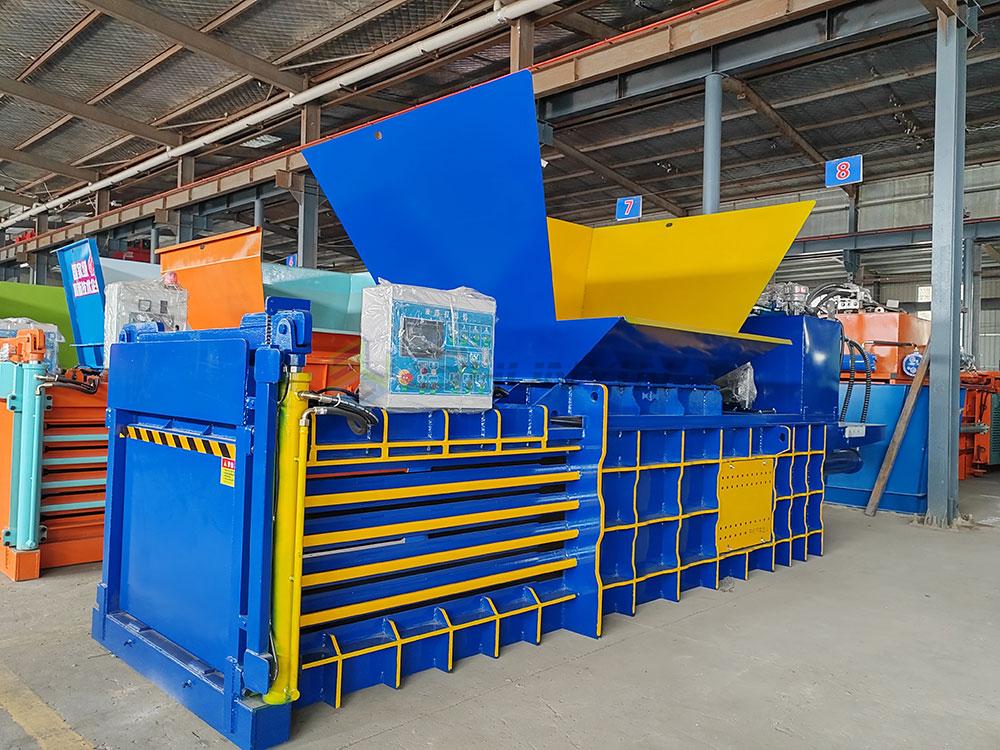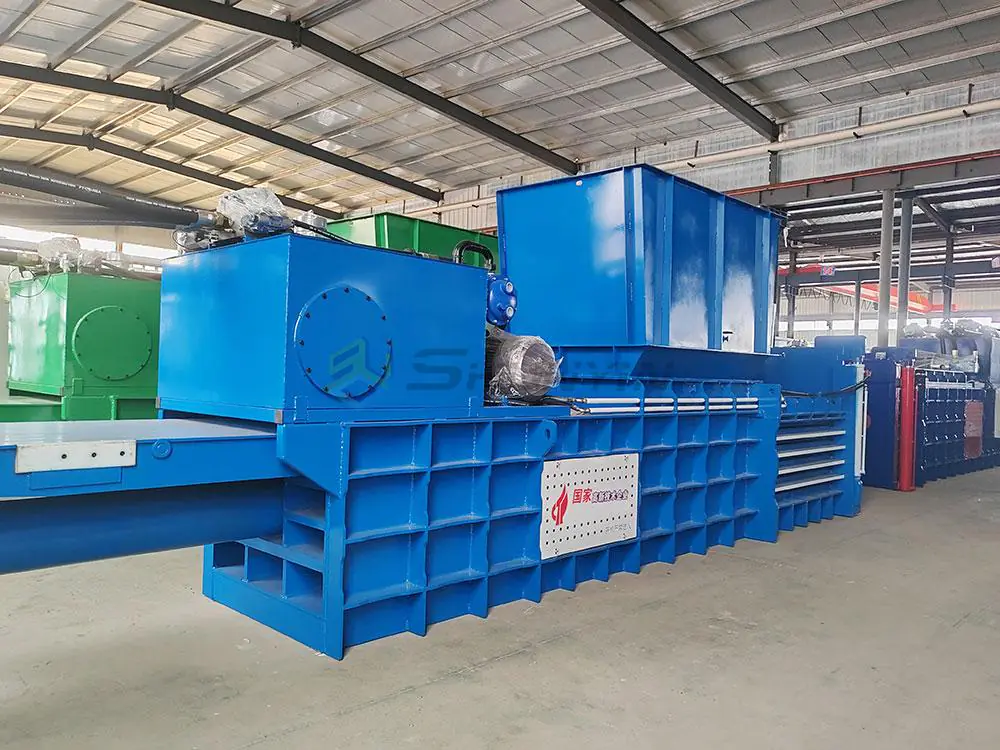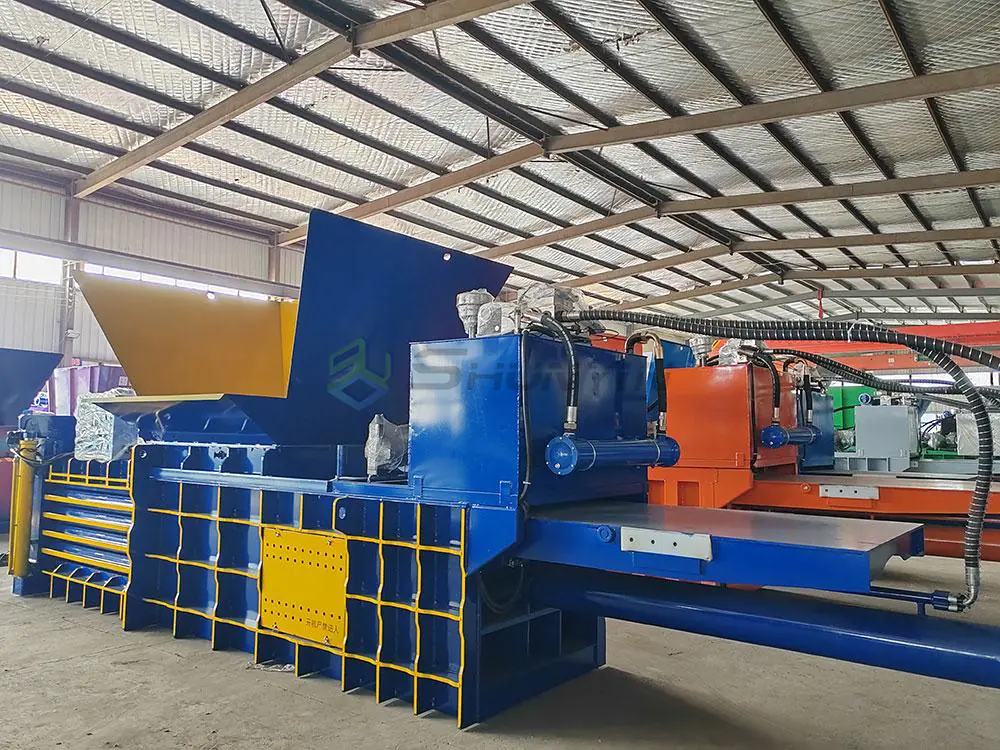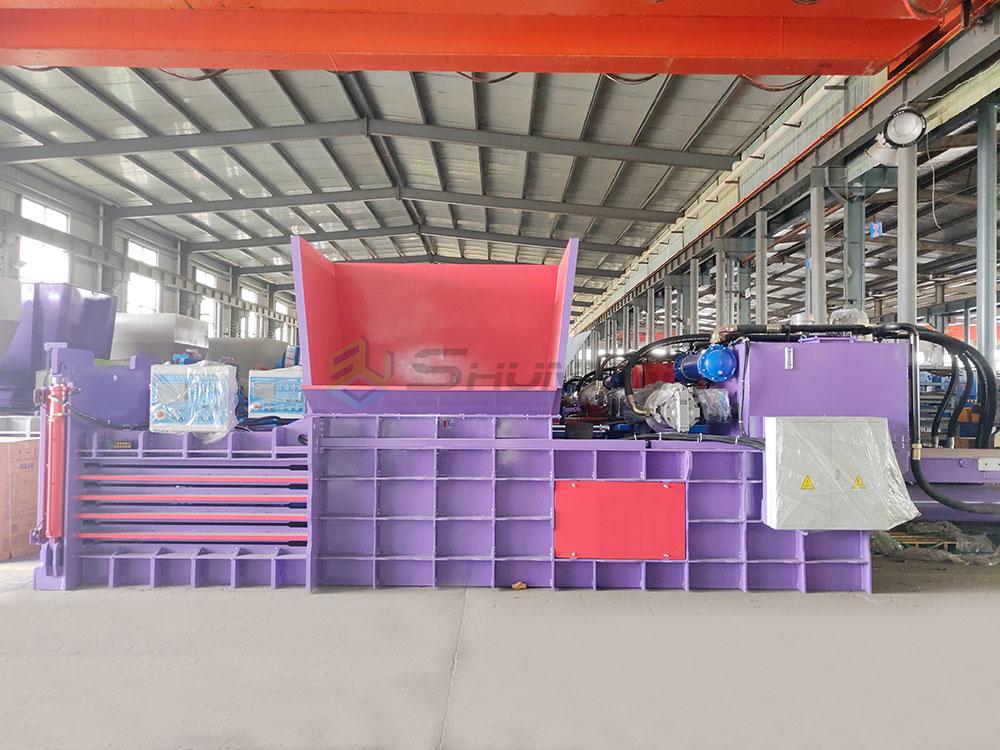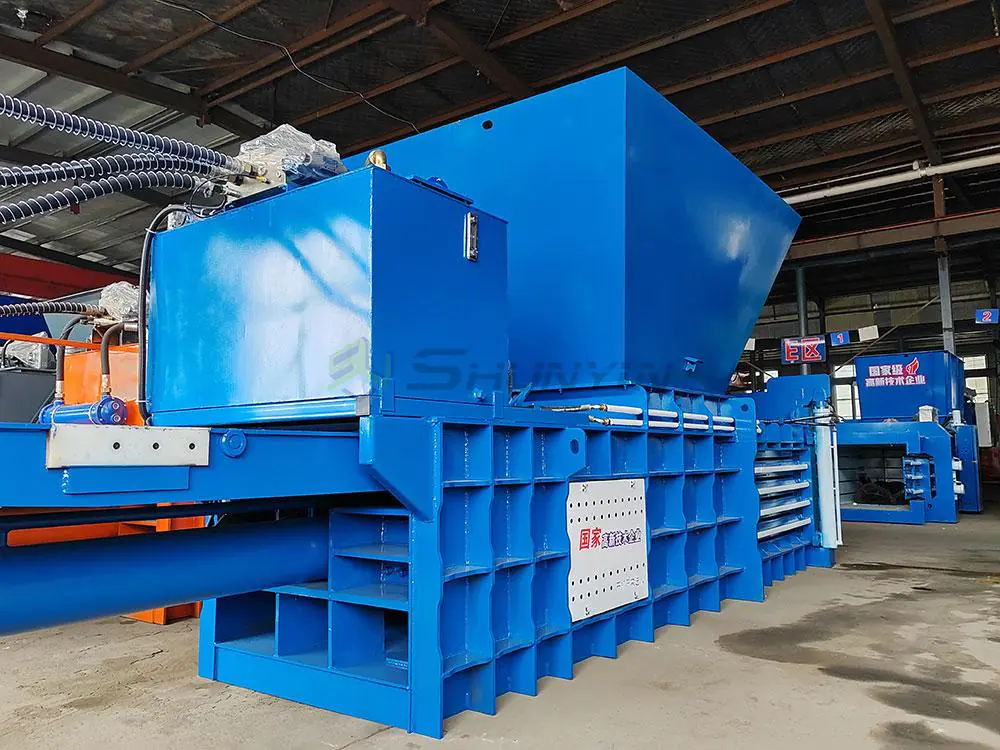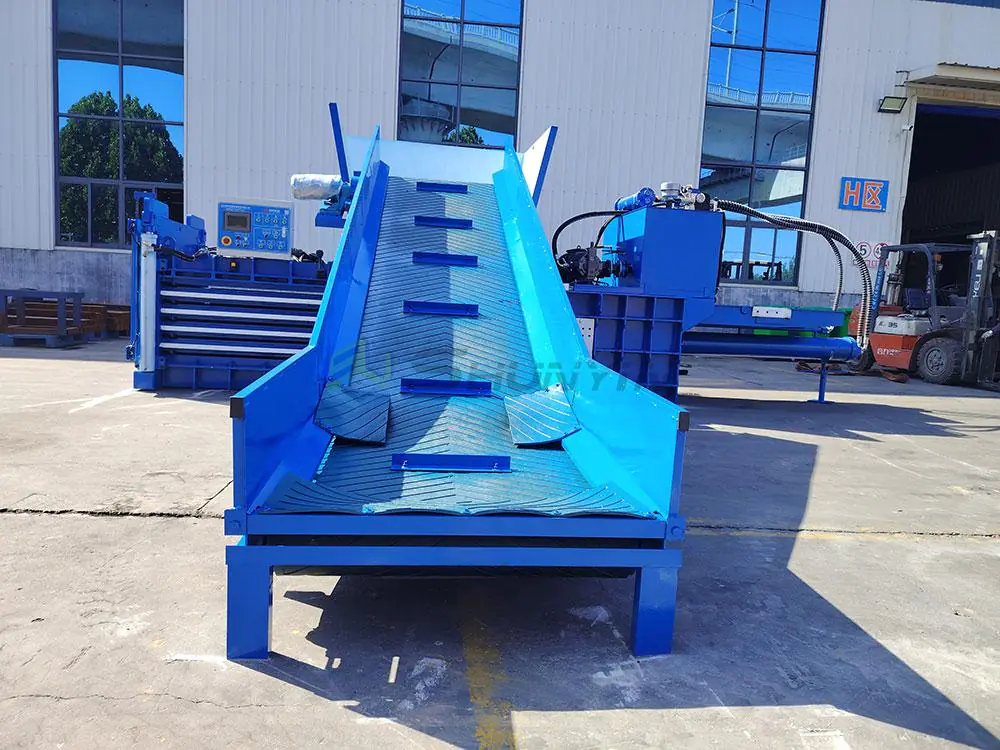
Recycling cardboard efficiently can help businesses save space and improve environmental sustainability. A horizontal baler is a popular choice for this task due to its unique advantages. Let’s explore why.
Horizontal cardboard balers are ideal for recycling because they:
- Handle large volumes of cardboard with high compression rates.
- Save space by compacting materials for easier storage and transport.
- Ensure consistent, high-quality bales that increase recyclables’ value.
- Reduce labor costs through automation and improve productivity.
- Support sustainability by diverting cardboard from landfills.
In recycling, using the right equipment is key to optimizing efficiency. A horizontal baler offers both high capacity and ease of use, making it a top choice. Let’s dive deeper into the benefits of choosing this baler for your needs.
What does a recycling baler do?
A recycling baler is a machine used to compress waste materials like cardboard, paper, plastics, and other recyclables into compact bales. These bales are easier to transport, store, and process, significantly reducing space requirements.
Recycling balers are designed to compress recyclables into dense, manageable bales. This helps reduce waste volume and makes recycling more cost-effective.

Key Functions of a Recycling Baler
- Compression: The baler uses hydraulic pressure to compact materials into tight, uniform bales.
- Binding: Once compressed, the material is bound with wire or other types of strapping to maintain its shape.
- Storage and Transport: The bales are easier to store and transport compared to loose materials.
Balers are particularly useful in commercial and industrial settings where large quantities of cardboard need to be managed. They help businesses manage waste efficiently and reduce their environmental footprint.
What is horizontal recycling?
Horizontal recycling refers to the use of horizontal balers in the recycling process. Unlike vertical balers, horizontal balers feed material horizontally and compress it into larger, more consistent bales. This method is especially suitable for high-volume recycling operations.
Horizontal recycling allows for the efficient handling of larger quantities of waste. It ensures that material is compressed consistently, creating compact bales that are easier to manage.

Why Horizontal Balers Work Well for Recycling
- Increased Efficiency: Horizontal balers are ideal for high-throughput operations, handling large volumes of waste without requiring constant monitoring.
- Continuous Feed: Horizontal balers are often equipped with conveyors, allowing for continuous feeding of material into the machine. This results in a steady output of bales.
- Large Bale Production: These machines are capable of producing larger bales, which saves on storage and transport costs.
Horizontal recycling is a better option for companies that deal with large volumes of recyclable materials, such as cardboard. It offers significant benefits in terms of productivity and space-saving.
What are the advantages of baling cardboard?
Baling cardboard has numerous advantages for businesses. The primary benefit is that it helps reduce waste volume by up to 90%. This makes it easier to manage and dispose of the material efficiently.
Baling cardboard helps reduce waste volume, saves space, and cuts down on transportation and disposal costs. It also improves recycling rates, making it a sustainable choice.

Space Savings
By compressing cardboard, businesses can free up valuable floor space that would otherwise be taken up by loose waste. This is particularly beneficial for warehouses and retail spaces.
Environmental Benefits
Baling cardboard also aids in environmental sustainability. The compact bales can be easily sent to recycling centers, where the material is processed and reused. This reduces the need for raw materials and minimizes the carbon footprint.
Cost Savings
Businesses can save on waste removal fees by producing bales that are easier to transport and dispose of. In some cases, companies can even receive payment for their recycled materials, creating an additional revenue stream.
What is the difference between vertical and horizontal balers?
The key difference between vertical and horizontal balers lies in their design and functionality. Vertical balers are more suited for smaller volumes, while horizontal balers excel in high-volume, industrial applications.
Vertical balers are compact and suitable for small operations, while horizontal balers handle larger quantities of material, making them ideal for businesses with significant recycling needs.

Vertical vs. Horizontal Baler Comparison
| Feature | Vertical Baler | Horizontal Baler |
|---|---|---|
| Capacity | Lower capacity | High capacity |
| Bale Size | Smaller bales | Larger bales |
| Material Handling | Manual feeding | Continuous feeding with conveyor |
| Footprint | Smaller and compact | Larger and requires more space |
| Cost | Lower cost | Higher cost |
While vertical balers are more affordable and occupy less space, horizontal balers are ideal for businesses with large-scale recycling operations. Horizontal balers offer better efficiency, higher capacity, and ease of use for large volumes of materials.
Conclusion
Choosing a horizontal cardboard baler for your recycling needs can streamline waste management, increase efficiency, and lower costs. Whether you’re looking to save space, reduce waste volume, or improve sustainability, a horizontal baler is an excellent choice.


